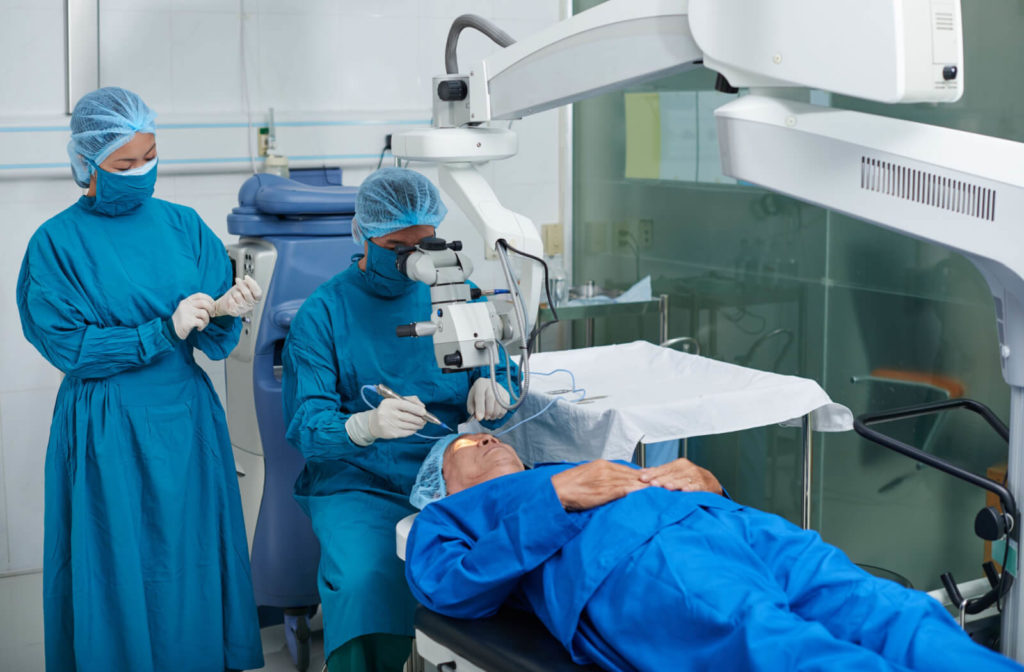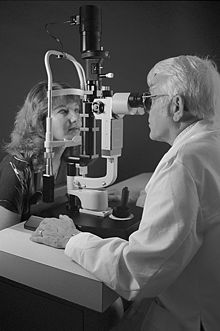The Value of Regular Check-Ups with an Eye Doctor Optometrist
Wiki Article
Discovering the current Technical Advancements in Optometry and What They Mean for Optometrists
In the ever-evolving area of optometry, current technical improvements are reshaping exactly how specialists approach eye treatment. From the accuracy of Optical Coherence Tomography to the nuanced understandings provided by AI-driven analysis tools, these technologies are establishing new standards in client evaluation and treatment. Teleoptometry is positioned to redefine access, making certain that expertise goes beyond geographical constraints. As these developments penetrate the method, eye doctors are confronted with the obstacle of accepting these devices to enhance individual results. Yet, the inquiry stays: how will these technical shifts redefine the duties and duties within the occupation?Innovations in Diagnostic Equipment
Advancing the area of optometry, technologies in analysis tools have actually reinvented the means eye care experts assess and detect ocular conditions and visual impairments. The previous decade has witnessed substantial technical improvements, allowing even more thorough and precise evaluations.An additional trick development is the introduction of innovative corneal topography systems, which map the surface curvature of the cornea with accuracy. These devices are especially beneficial for suitable call lenses and identifying corneal conditions. Electronic retinal imaging has changed standard ophthalmoscopy, using detailed, scenic sights of the retina that assist in comprehensive aesthetic assessments.
The growth of wavefront aberrometry has actually additionally been essential, enabling the analysis of refractive mistakes with unrivaled accuracy (Opticore Optometry). This technology assists in tailoring corrective lenses and improving medical outcomes for refractive surgical treatments. Jointly, these analysis innovations encourage optometrists to deliver premium individual care, making sure early intervention and tailored therapy strategies, ultimately boosting aesthetic health end results
AI in Patient Administration
Building on the foundation of cutting-edge analysis devices, the consolidation of fabricated intelligence (AI) in client administration stands for a transformative leap for optometry. AI systems are progressively employed to improve performance, accuracy, and customization in individual care.Furthermore, AI-driven systems promote streamlined individual interactions and administrative processes. Automated organizing, virtual consultations, and personalized follow-up strategies not just enhance client contentment but likewise optimize time management for practitioners. These systems can triage clients based on the necessity of their conditions, ensuring that those in vital requirement receive prompt interest.
Furthermore, AI boosts decision-making by offering eye doctors with evidence-based referrals and therapy paths. By incorporating information from digital wellness records, AI tools offer understandings that notify clinical decisions, decreasing the risk of mistakes and improving individual end results. As AI continues to advance, its duty in patient administration will likely expand, reshaping the landscape of optometric treatment.
Developments in Retinal Imaging
In the world of optometry, retinal imaging has actually witnessed impressive technological improvements that are boosting analysis abilities and client care. Innovations such as Optical Coherence Tomography (OCT) and fundus digital photography have reinvented just how eye doctors visualize and analyze the retina. OCT, specifically, supplies high-resolution, cross-sectional images of the retina, permitting for the comprehensive evaluation of its layers. This capability is very useful for very early discovery and administration of conditions like glaucoma, diabetic person retinopathy, and age-related macular deterioration.Improved imaging methods like OCT angiography are more refining diagnostic accuracy. This non-invasive method maps blood flow in the retina, using important understandings right into vascular health and wellness without the demand for dye injections. Furthermore, adaptive optics innovation is being integrated right into retinal imaging systems to fix eye aberrations, delivering extraordinary picture clearness. Such developments facilitate the identification of min retinal changes that could indicate condition progression.
Additionally, advancements in artificial knowledge are boosting retinal imaging by making it possible for automatic analysis of big datasets. These systems help eye doctors in recognizing patterns a sign of pathology, thereby boosting analysis accuracy and performance. Collectively, these technologies are changing retinal imaging right into a keystone of modern eye treatment, boosting outcomes and increasing healing opportunities.
Teleoptometry's Expanding Duty
Teleoptometry is significantly ending up being an essential part of eye care, driven by improvements in digital interaction and diagnostic devices. As optometry embraces digital change, teleoptometry facilitates remote assessments, permitting eye doctors to extend their solutions beyond traditional boundaries. This is especially advantageous in underserved and country locations where access to specialized eye care is usually restricted. By leveraging high-resolution video clip conferencing and progressed retinal imaging, optometrists can conduct thorough eye tests from afar, guaranteeing prompt medical diagnosis and treatment.The assimilation of man-made knowledge (AI) further enhances teleoptometry, allowing the evaluation of visual data and helping in the detection of ocular problems such as glaucoma and diabetic person retinopathy. AI-powered formulas can rapidly interpret complicated imaging data, giving eye doctors with useful understandings that boost medical decision-making.
In addition, teleoptometry sustains continuity of treatment with smooth combination with digital wellness documents (EHRs), enabling eye doctors to maintain extensive individual backgrounds. This makes certain that clients receive consistent and tailored care also when seeking advice from with different experts.
In spite of these benefits, difficulties remain, consisting of making sure information safety and managing individual expectations. Nonetheless, teleoptometry represents a considerable stride towards more obtainable, efficient, and patient-centered eye care. As innovation progresses, its role is poised to expand even more.

Future Trends in Eye Care
A myriad of ingenious fads is set to improve the future of eye care, driven by technical innovations and the advancing demands of people. One considerable trend is the assimilation of expert system (AI) in diagnostics, which promises to improve the accuracy and efficiency of eye assessments. AI algorithms can analyze vast quantities of data page from retinal images, possibly identifying problems like diabetic retinopathy and glaucoma earlier than typical approaches.Additionally, individualized medication is obtaining grip in optometry, with hereditary testing educating tailored therapy strategies. This method intends to enhance patient outcomes by customizing interventions to specific genetic accounts. Wearable innovation, such as clever get in touch with lenses, is additionally on the perspective, supplying real-time tracking of intraocular stress or sugar degrees, thus providing continuous understandings right into systemic and ocular health and wellness.
The fostering of augmented reality (AR) and online reality (VIRTUAL REALITY) in training and patient education and learning look at more info is another emerging fad. These modern technologies supply immersive experiences that can enhance understanding and abilities both for eye doctors and individuals. As these fads advance, optometrists have to stay abreast of technical innovations to give innovative treatment, making sure better person end results and complete satisfaction in the vibrant landscape of eye care.
Final Thought

Jointly, these analysis innovations empower eye doctors to deliver premium person treatment, ensuring early treatment and tailored therapy approaches, ultimately enhancing aesthetic health end results.

As these technologies proceed to develop, eye doctors have to adapt and incorporate them into method, ultimately enhancing process performance and raising the criterion of eye care delivered to individuals.
Report this wiki page